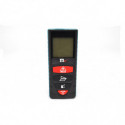- niesymetryczne ostrze,
- wygięcie wiertła przy wierceniu gdy napunktowanie materiału nie leży w osi obrotu
- cienkie wiotkie wiertło które się wybocza, lepiej stosować możliwie krótkie
Można też próbować temu zaradzić krępując na wierzchu do wierconego materiału np drewniany klocek/deskę która pełni rolę prowadzenia..
tu o
https://www.practicalmachinist.com/vb/g ... it-169368/
http://forums.pelicanparts.com/off-topi ... gular.html
https://talk.newagtalk.com/forums/threa ... etCookie=1
https://www.trifive.com/forums/showthread.php?t=125575
I learned that trick several decades ago. We all probably learned early on that common twist drills make tri-lobular holes in thin metal. I learned how to grind a bit to make a round hole from others, a trade secret passed down for generations, I suppose. The tip looks a lot like a brad point drill for wood working. The best off the shelf bits that work well for sheet metal and about everything else are Black & Decker Bullet Point drills. As was said, Unibits also work well, but it is easy to misjudge the RPM and burn them on steel or stainless.











